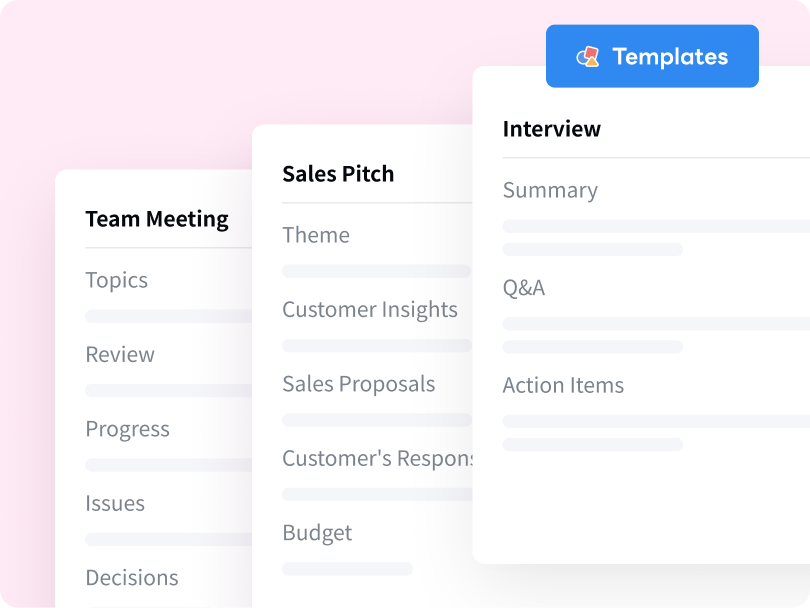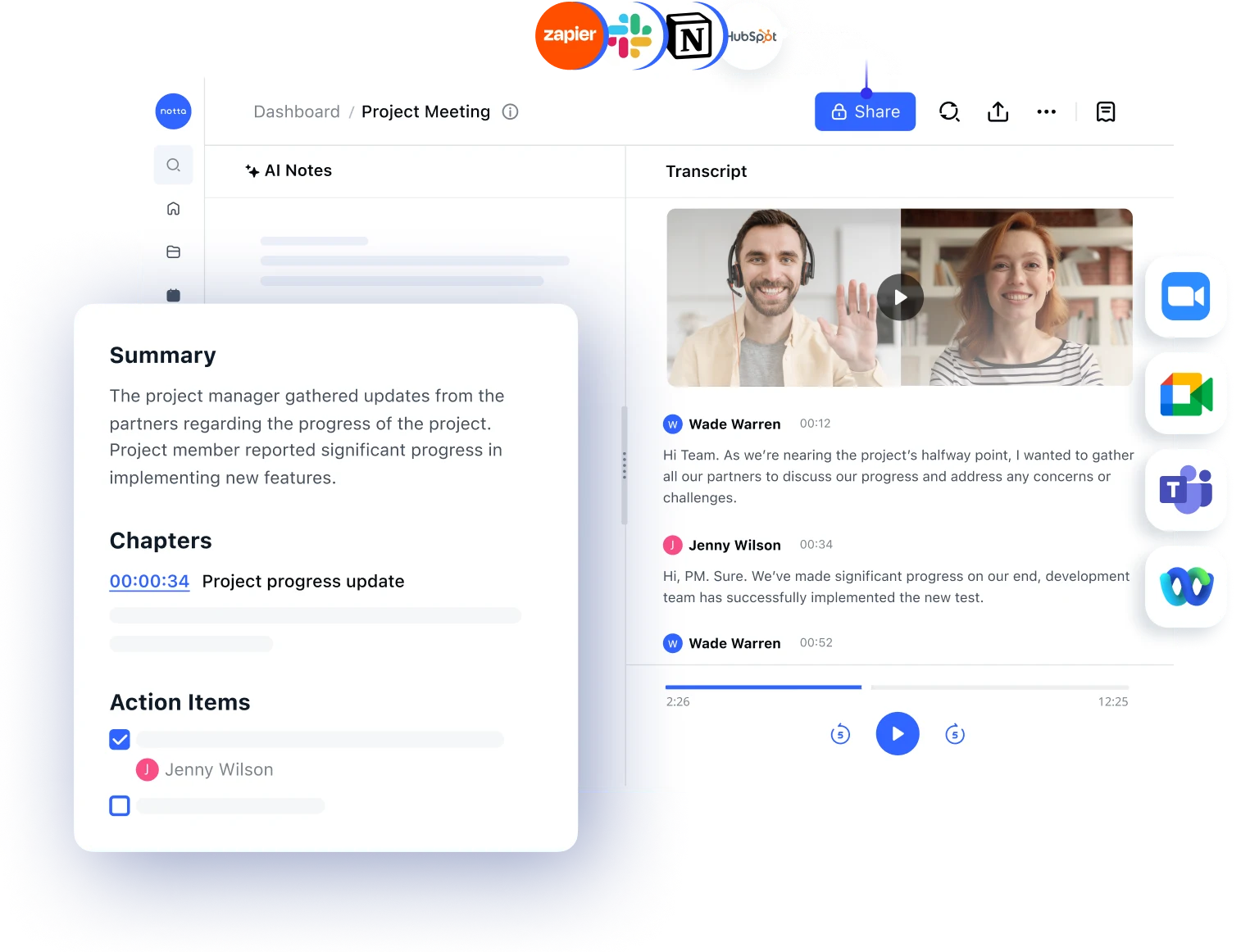There are hundreds of marketing methods today, but a written case study remains a tried and tested practice to attract new customers. A few months ago, I started working on the case studies — and that's when I learned so much about what works — and what doesn't.
By the time a reader decides to take a look at your case study, they're seriously considering your offering. It's the time when the prospect will either engage more or lose their interest completely. But before the reader thinks of looking at the case study, they'll need a short, meaningful summary.
But how to summarize a case study that's short, simple, and informative? I've written over 50+ case studies, and each one has a short summary. In this detailed guide, I'll show you some tried and tested methods of summarizing long documents.
What is a case study summary?
A case study summary is a short recap of a detailed case, interview, or other document. It has all of the same traits as that of a good summary: it's clean, short, straightforward, and flows naturally for the reader. But in the business world, a case study has the job of connecting customers with business, and a great summary also does the same.
A lead decides to look at the case study summary only if they're seriously interested in the products/services you offer. After reading, your reader's reaction will likely come down to this: did the case study summary make the benefits seem necessary or just nice to have?
If it's the latter, your prospects will probably avoid reading the detailed case study and pass on the opportunity. That's why the summary should include the key points and highlights from the case study and showcase to customers that your product or service is a necessity for their business growth.

How to summarize a case study (with guidelines)
I have recently read a statement: 'An educated client is a secure client.' Business typically boils down to two priorities: creating a useful product and then making people realize how it can help them. Both of these things mainly revolve around customer education, and both require a case study summary to get the job done.
Here, I'll reveal some simple steps that will help you summarize a case study.
1. Read the case study
When it comes to summarizing a case study, think about how effective it will be from the reader's perspective. You can even take notes and formulate an information architecture into proper formatting, headers, and bullet points to manage content better.
2. Understand the goal
A business case study, for example, is a detailed document that defines how a business and its product helped a client improve sales. You should apply the same story and approach to write a case study summary — ensuring it sticks in the heart and mind of the reader.
3. Identify the main points
A good case study teaches prospects something — related to your products, services, new features, or how you're different. Think about the main points of the case study and why people should bother to read it. One of the biggest keys to a great summary is to speak to the customers' pain points directly and immediately offer the solution.

4. Write a clear summary
Now, write the way you talk — with clear ideas, concise language, and a welcoming tone. You need to hold onto your reader's attention with appropriate words and interesting facts. My number one tip is to be creative — even if the case study is boring. Here, your ultimate goal is to be engaging and creative — and, that too, within the confines of the industry.

Ready to revolutionize your post-meeting workflow? Give Notta's AI Summary Templates a try today and experience the difference for yourself. Simply select the template that best fits your needs, and watch as Notta transforms your raw notes into polished, concise summaries. Your time is precious – let Notta help you make the most of it.
5. Read and revise
When you're done writing, read the summary aloud to yourself. Give it some emotions (if you can and if the topic allows you) while ensuring there is no fluff in the summary.
Depending on the type of case study summary, you might include different elements — but here's a general breakdown of the guidelines that you should keep in mind while summarizing.
Length: A good summary should have everything — from an attention-grabbing headline to a detailed explanation of the product, service, concept, or project. But that doesn't mean it can be a seven-page-long document. You must stick to the important facts and keep it pretty short — a few paragraphs or one page maximum.
Problem & Solution: Next, clearly state the problem (or issue) you want to solve and then briefly explain how the information provided in the case study solves it.
End with CTA: You'll need to tell your readers what to do next. For example, add the contact information if you want them to contact you or add links to more articles so they can continue reading.
Capture every detail with AI meeting notes
Notta offers the most integrated AI meeting notes, summaries, and action items so nothing gets missed.
Example of a case study summary
Let's take a look at one example of how people summarize case studies. The example below is technically one page but packs a lot of information into it.
Here's an example of how to write an executive summary for a case study.
[Introduction]: The case study explains how the leading eCommerce platform (Company X) improved its customer experience with the digital tool.
[Challenge]: Digital presence and customer satisfaction were the two key challenges faced by Company X.
[Approach]: With the help of AI and automation, Company X implemented a robust CRM system and even launched a mobile app for user interaction.
[Solution]: The approach helped the client improve their sales by 20% — in only three months.
Tips for summarizing case studies
One of my responsibilities as a freelancer is creating case studies and sending them to potential clients. They're busy people, so I include a case study summary at the beginning that briefs the ten pages of detailed information into a few bullet points — the must-knows. Here’s how to write a case study summary — faster and better.
1. Write great hook lines
Any article, blog, interview, email, or summary with an annoying hook line is going to get sent to spam right away. You should check and make sure the hook line is short enough to be read in seconds and grabs the attention of the reader. The point is to place the important or value-added material at the top of the summary.

2. Keep things scannable
People are busy, and only a few of them have the time to read a summary that's packed with text. If you take some time to think about what case study summaries work best, you'll likely find that the most effective ones are pretty brief. Smart formatting (with a strategic design) can keep the summary short while ensuring it has enough substance.
3. Automate tasks with AI
With an AI case study summary tool, you can skip the blank-page stage of the summarizing process. These tools can analyze the content and come up with a short, informative summary — freeing up your time for other work. Notta is one of the popular AI note-taking and summarizing apps out there right now.
Whether you want to summarize interviews or voice memos, Notta Web App can help you with the job. It's particularly helpful if you've case studies in audio or video format: just upload the file, and Notta will generate a transcript and well-structured summary with an overview, key chapters, and action items.

Efficient, productive meetings with Notta
Notta AI meeting assistant records, transcribes, and summarizes meetings so everyone can stay engaged without missing important details.
FAQs
How long should a case study summary be?
While the exact length of a case study summary will depend on what you're summarizing, it typically ranges from a few paragraphs (2 or 3) to one single page. For example, if you're writing a customer case study with your storytelling skills, it can go as long as one page. But if you are summarizing an interview for the recruiting team, a paragraph or two would help them understand the candidate's skills.
How to write a good case study?
Even the most trusted marketers or businesses will tell you how much case studies have boosted their business. It's like a customer review that can get you more business — only if you write it properly. If you're new to writing case studies, here are simple steps to make the process a lot easier.
Start your research: Like anything else you write, you'll need to do proper research for a case study. For example, this includes the target audience, the message you're trying to convey, and the value your case study will provide.
Write the key highlights: A good case study summary is typically short and sweet, so don't defeat the whole purpose by adding unnecessary things. You'll need to include only the key highlights that matter the most to the reader.
Choose the format: While you may feel tempted to use all the space you have — don't. Some empty space around the text keeps the summary look uncluttered and easy to read.
Include a social proof: Reading a case study is like reading a review — but it mainly relies on storytelling. Including social proof in the case study will push leads to book their first call, send an email, or even sign up for a newsletter.
Be honest: The goal of your case study isn't to win over every single person reading it — instead, it's to win over the people who'll be your potential customers. Being honest is the key here.
Key takeaways
It takes some time and effort to learn how to summarize a case study and condense all the important information into only a few paragraphs. If you don’t have enough time, check out my favorite AI note-taker and summarizer, Notta. It’s pretty easy to use — just upload the case study video, and the AI tool will quickly transcribe and summarize the information.




